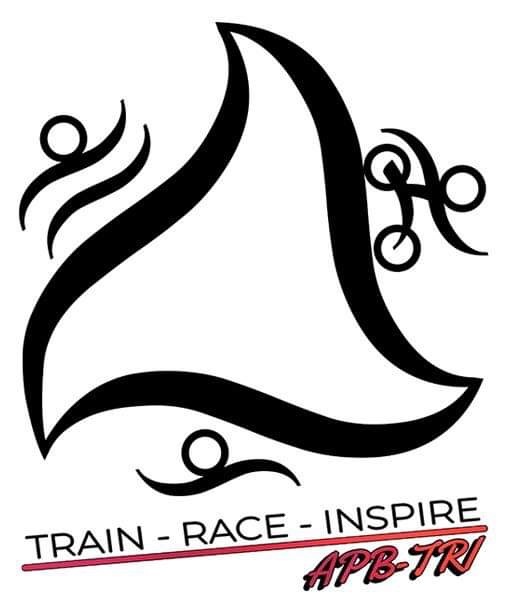A couple of months before my full ironman race was supposed to take place, I woke up in full panic mode that I have to figure out my race nutrition and hydration. I’d recommend planning for these over a course of multiple months (and training sessions), but those aren’t the only parts of pre-race prep you have to figure out.
Preparing for the race will include multiple steps:
- Accommodations if it’s a destination race
- Travel to destination if applicable
- Pre-race carb loading
- How you’ll get to the starting line
- Ensuring you have everything you need on the course
- Preparing things for just after the race
accomodations
So you booked a destination race? Awesome! Some place pretty and fun to do your thing. It’s all great until you realize that you have to get there and find a place to stay. Even if you’re racing in a huge tourist destination (like NYC), you need to get moving on finding a hotel. I am planning on racing in Ironman Maryland and one thing became obvious quickly: there are not enough accommodations around. To be fair, same issue popped up during Luray Triathlon. I think that Vermont City and Disney World were the only places where finding hotel was easy. But I messed other things up in there, which I will get to later.
Arrival
Getting to your destination sure is an important part of this puzzle, too. Make sure you know when you’re supposed to pick up your bib and what-nots, as well as check in your gear (more relevant to triathlons than running, but still something to keep in mind). Based on that, pick what’s the latest you can arrive. Spare a thought to level of difficulty of travel and time changes. You don’t want to arrive on Friday after being cooped up on a flight for 12 hours and then race on Saturday, while dealing with a 5 hour time change. If you’re crossing time zones, make sure you travel early enough to adjust. It’s half a problem if you’re going west, so you can get up a bit earlier. But imagine me flying from the east coast of the US to Poland for Ironman 70.3 Gdynia – that’s getting up in the middle of the night!
Something you may not have thought of: heat and altitude acclimatization. I ran in Florida in January. It was in the 80s there, while it was freezing back home. Heat was tough! Altitude make cause issues as well. If you live at sea level, being a mile high in Denver will be a challenge. Remember that moving vertically is hard on your body even if you are inactive. Racing for an extended period of time will be a whole another thing!
In short: plan your arrival and accommodations to make sure you are well-rested and able to wake up on time for your big day.
Something that merits a second thought: after the race, you will be tired and in need of a shower. Consider having a place for the night after. When I raced Philly marathon, I went home right after. It was ok thanks to an awesome friend, but I felt pretty gross without access to a shower for multiple hours after.
Pre-race Prep: carb loading
Plan your meal for the night before (check out this article on carb loading properly)! This part of pre-race prep is easy to forget, but it doesn’t mean it’s not important. Before running Philadelphia marathon, I didn’t give much thought where I would eat dinner the night before. It was hard to find a suitable dinner (and my friend actually was opposite to helpful on that). So check for restaurant availability beforehand. For example, I already know that I need to bring microwaveable bowl of pasta for my pre-race dinner in Ironman Maryland. You can’t say I don’t learn from my own mistakes 😉.
Don’t forget to come up with breakfast… Many races start early in the morning and it’s not guaranteed that where you’re staying will provide food, especially at that kind of hour. I mean: Disney marathon started at like 5am. When in doubt, go to a nearby store and get some pastries and such for breakfast.
How will you get to the starting line?
Plan this! I have messed this one up… I’m a city dweller who lives not far from a large airport, so I assumed that when I get to Vermont, I will always be able to get a cab or Uber to the starting line. Guess what? Burlington, VT doesn’t have much of either and I had to bum a ride off another racer. Not an experience I wish to ever repeat… When I did Walt Disney World Marathon, on the other hand, I didn’t realize that getting back to the hotel would be such a problem. Getting to the starting line was easy enough – my hotel had a shuttle. Getting back required taking a shuttle to one of the resorts and getting a ride to Disney Springs. By then though, there was a ton of people around and everything was packed. I don’t even remember how long it took me to get back. I’m pretty sure I blocked it out.
Oh, and let’s not forget that once I got to Disney Springs, I realized I need to climb these stairs:

Don’t be an idiot like me, plan your travel to the starting line and from the finish line.
Packing in pre-race prep
Whether it’s a race going in front of your house or you travel away, make sure you have packed everything you need. I will use a triathlon as an example, as it’s more complex and lends itself better to examples.
Gear
When traveling to Poland, I forgot my belt for bib number. Yes, they gave me one with the bib. Guess what? I broke it immediately… Make sure you have everything you need long enough before travelling, so if you are missing something you can order it on Amazon or run to your local bike or running shop. You don’t need to compound your pre-race jitters by missing some key item.
Food and water
Check what you will need on the course. When racing in Luray, I didn’t have much water with me. I assumed there would be plenty of aid stations along the way. It was super hot on the day and they had very few water stations. I only remember one (although it doesn’t mean there wasn’t another one). So: water and nutrition if appropriate. Check course map to see if the race organizer will provide. Another thing I learned the hard way: if you’re racing in a city, people will hand out candy, fruit, drinks (skip the beer!) along the route. But if it’s in the middle of nowhere, you’re on your own. And let’s face it: bike courses in triathlons will have long stretches far away from people. Pack water and food. Better to bring some home than run out.
Tools
If you’re biking for any part of the race, bring your own bike maintenance tools and spare tires. We all hope that they won’t be necessary, but hope is the mother of fools as the saying goes. Oh, and learn to use them. Just a couple of weeks ago, I realized I have never changed a bike tire. I proceeded to learn it on a flat tire of my indoor bike. Good thing – it took forever, I ended with a sliced finger, covered in grease and exhausted. So in your pre-race prep, make sure to learn how to do all you may need to do.
Prepare for post-race
I already mentioned that you need a way to get home after… But that’s not all you will need. Plan for what you will eat. Some events have food trucks, parties, are near restaurants. Some are not. Check it ahead of time and either pack your food or plan how to get to it after the race.
More importantly though: make sure you don’t give yourself hypothermia. It’s amazing how fast you can get cold once you stop running! Many races give out space blankets, but not all. Have a friend wait for you with a sweater or pack it in the post-race bag. I had this issue both after Baltimore and Vermont City marathons. You’d think I’d learn… The issue was that sun hid in later parts of the day and it felt cold. Ah, those were moments I could dream of while overheating during my ridiculously hot Disney Marathon 😉!
I hope we will all race again soon! In the meantime, keep training!
